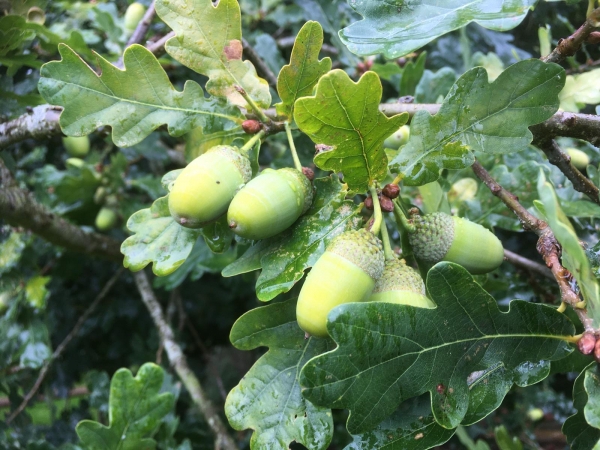-
27
Oct -
It’s a Mast Year for the humble Acorn!

Have you noticed LOADS of acorns under the oak trees this Autumn? That’s because it’s a Mast Year for acorns. Get planting this bounty! A mast year is when the trees have a bumper crop and produce much more fruit/seeds than they normally would.
Trees such as oak and beech fluctuate massively year on year in the fruit they produce – in some years no fruit will be seen and in others, they have an exceptional crop.
One of the major theories amongst scientists for a ‘mast year’ is that many animals including mammals and birds feed on this woodland fruit. The trees hold back for a few years keeping these populations low. Then during a mast year, more food is produced than the animals and birds can possibly eat, ensuring that some seeds will start to grow.
This has a major evolutionary advantage for the tree. Producing seeds is hard work so it’s important that some of the fruit will grow. Producing fruit in a mast year does stunt growth of the tree but as this only occurs every five to ten years, it’s a worthwhile pay off to ensure the production of more saplings.
Mast years are not just one-off events occurring with one specific tree – the vast majority of woodland trees across the UK will have a fantastic crop. So how do trees seemingly miles apart communicate with one another? This is one of nature’s mysteries, but scientists say it’s probably to do with the weather. The right combination of temperature and rainfall in the spring is thought to trigger this response.
So get planting…
Preferably hurl bucketloads or handfuls into promising looking thickets of thorny shrubs like bramble. Helps keep the deer off and slows growth. The little trees will get tough trunks growing under this canopy. We can imitate these conditions in our home gardens if we like.